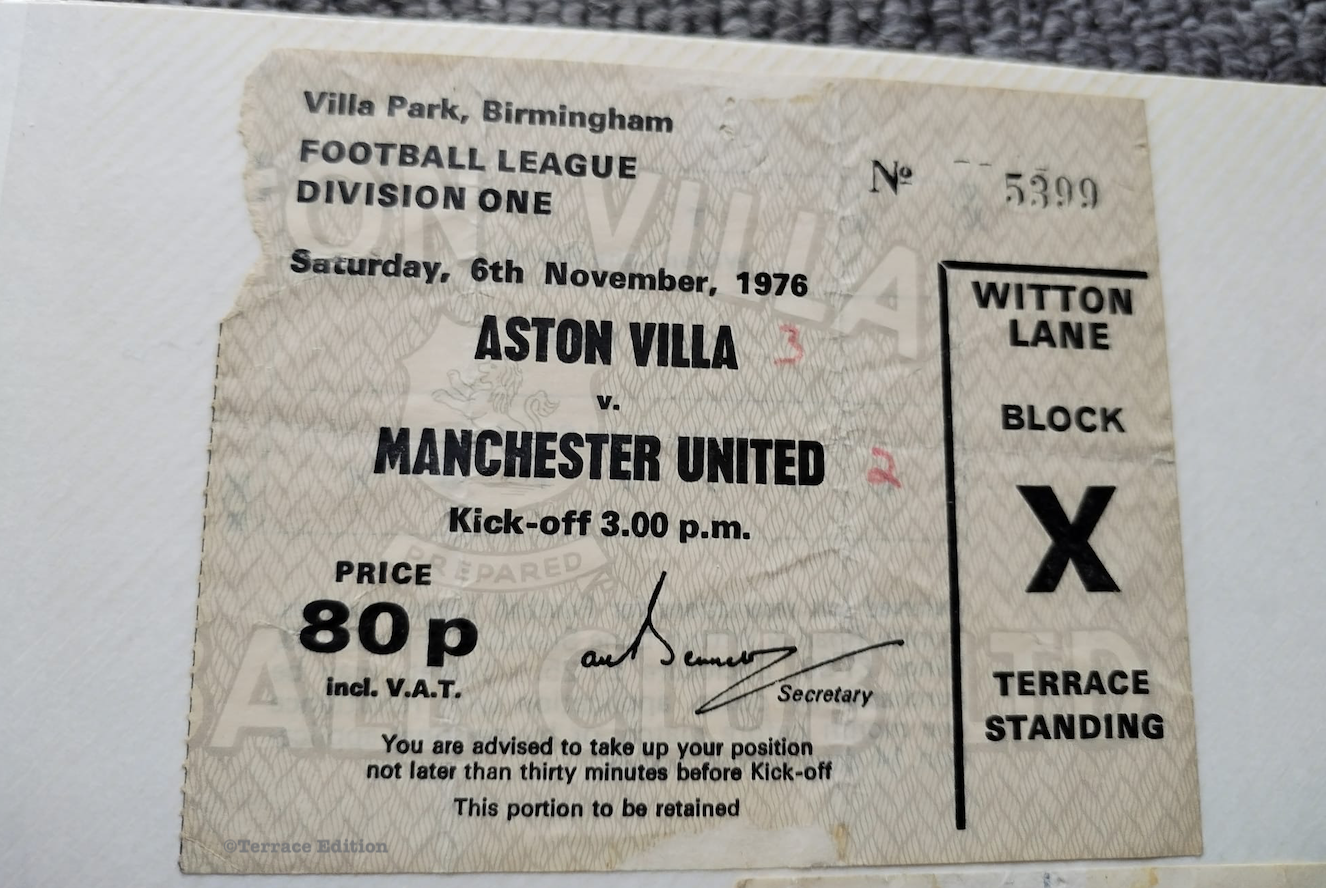The shadow of the blueprint

Words: Tom Reed
We have to believe that it was an act of naivety, rather than aiding and abetting the cultural pilfering of football from poor and working class people. A giddiness from the short-lived Thatcher boom from the late 80’s.
The Football Association’s 1991 “The Blueprint For The Future Of Football” extended to some 124 pages but contained a killer paragraph or two which summed up its intentions.
“The implication is that hard choices have to be made as to the consumer segment to which the offer is to be targeted and hence the ingredients of that offer. As implied above, the response of most sectors has been to move upmarket to follow the affluent ‘middle class’ consumer in his or her pursuits and aspirations. We strongly suggest that there is a message in this for football, and particularly for the design of stadia in the future.”
Now Fulham FC are planning a hospitality area with two two Michelin Star restaurants and a rooftop swimming pool, while their supporters’ trust are protesting against a “typical 18% price increase”.
To get to how Fulham, for a long time a workaday club followed by loyal local supporters, got to the stage of charging £160 for certain tickets we need to go back to the FA of 1991, when its Chief Executive Graham Kelly was signing off the Blueprint, brashly asking for press Editors to give the masterplan “just a few of the headlines customarily bestowed upon cricket, tennis and golf in midsummer to develop the theme to a profitable conclusion.”
Profits don’t seem to be an issue so much Mr Kelly but access to the sport for longstanding supporters could well be and that is without mentioning the people on the poverty line and below who could well do with an afternoon at the match but see it as impossible as owning a house.
Strangely, the 1991 Blueprint directly linked homeownerism to their desire to see football washed over with Daily Mail readers’ money, saying “Firstly, we expect the economy to continue growing at a sustained if not spectacular rate. The average consumer will become more affluent in real terms. Secondly, despite short-term falls, the appreciation of house prices has provided a basic wealth holding for a significant section of the population which will to continue to bolster confidence in spending.”
It’s not often you could replace a whole chunk of an organisation’s manifesto with the money-mouth face emoji but it might have saved a good few minute’s reading, of the FA’s retrospectively.
“Let them eat bread” said a statement today from Hammers United, the active protest arm of West Ham United’s fanbase, adding “Hammers United believes the announcement of the new price increases is absolutely shameful and fully exposes the long held belief among the fans that the Club sees us all as nothing more than customers who, due to our loyalty and absolute lack of an alternative, are there to be bled dry.”
West Ham have moved from their intimate Upton Park, embedded in its community to the echoey Olympic Stadium but is it a surprise when you read that 1991 Blueprint which came up with lines that could have been from an 80’s Stella Artois commercial such as “affluence has enabled people to break down some of the historical ‘confidence’ barriers so that it is no longer unusual for the average man or woman to eat in an expensive restaurant, play golf, buy a ticket to Wimbledon or the Open or to take a holiday abroad.”
Reassuringly expensive maybe this “uplift” that West Ham referenced when announcing their new ticket rates but the idea of “price elasticity” and a snapping point to how high ticket prices can go, never seems to be reached, with tourists adding Stretch Armstrong levels of pull to prices that never pop.
There’s further room for gloom, when you consider young supporters in a country racked with recession, inflation, zero-hours contracts and minimum wage employers but rising ticket prices. It’s a situation that doesn’t compute but the FA, in 1991, seemed more focused on the grey pound than it did in encouraging new generations of supporters.
“From the point of view of spectating, the ageing of society reinforces the points made earlier about expectations of quality in service and services. For the middle-aged, a significant extra injection of wealth will come through the mechanism of inheritance, so that they above all others are likely to have the spending power which demands high quality.”
Aston Villa vs Manchester United ticket. 80p in 1976 equals roughly £6.00 in 2024 adjusted for inflation.
Now we see Fulham supporters, whose back-in-the-days worries went no further than Jim Stannard fumbling a cross, forlorn at the prospect of being priced out and their ground resembling a Vegas playground for what the FA labelled “the haves” back in ’91.
Meanwhile, young fans across the country in the all seater bowls have their best fun on the concourses out the back and more and more supporters head to the terraces of non-league for cheap thrills of standing and support. There’s no talk of swimming pools and Wasabi foam among the people that make the real football culture.
Within a year of the FA Blueprint, the so called “guardians of the game” were involved with the setting up of the Premier League, which they promptly lost control of, with fewer cocky pronouncements from the likes of Graham Kelly as to what went wrong.
Again, we have to believe it was just a bad job, a judgement call gone wrong because to think that the Football Association were alive to the prospect of football grounds as Disney World and the “have nots” being shifted out of the game they nurtured through its barren spells, is too sinful to countenance.
It could be closer to what David Conn once called, a betrayal.
“the second related factor is the extent to which society is becoming polarised between the ‘haves’ and ‘have nots’. Although the 1980’s saw dramatic affluence gains across society as a whole, the degree of disparity between the rich and the poor increased too. Our forecasts reflect a belief that the 1990’s will not see the political will to stem this trend, which means both that the disparity between rich and poor households will increase…”
Tom is Terrace Edition Editor and can be found on Twitter: @Tomreedwriting






